Today was the first day of the second semester at the University Of Wolverhampton on my Undergraduate course upon completion of which I hope to gain a BA (Hons) in Photography.
After the last semester consisting of Black & White, and Colour Film Photography was done we move on in our groups to do Digital Photography or Studio Photography. For me and the other classmates in my group we are on Digital, with Gavin Rogers as our lecturer.
The morning started off with a quick chat and catch up with coursemates in the studio area before we split into our groups for the day.
Introductions
There are eight of us in the Digital group and we’re sat down in a circle to introduce ourselves briefly to Gavin, nothing fancy, just a name each.
Once the names are on the board Gavin gives us a brief overview of what the course will consist of and we are looking forward to getting more from digital cameras and processes with the promise of the knowledge to come our way.
Gavin explains that the course is not purely Photoshop Training but you can ask questions if you need help in using Photoshop, he won’t be doing demos all the time on the board, after all that’s what the online guide is for in the software.
We will be using digital tools (cameras and computers) to turn an image on it’s head and make it into something different to the initial state.
Again, like in the previous workshops we’ll use a Sketchbook, Notes, Reflective Journal etc to document work and progress, depending on what we’re comfortable with.
Exercise Me
Gavin said he did an exercise with the Futurologists a group from Belgium where you select the youngest person you know and love, and the oldest, then imagine what the youngest of the two will be doing when as old as the oldest.
In my example I gave Ewan (18) as the youngest and Bob (79) as the older.
When asked for a description I went for a Bladerunner type world and said that Ewan was living in an underground bunker before getting up to go and work as a holographic performing arts teacher. I also said that being 79 was no longer considered as Old and more middle aged.
Ewan struggled to succeed early in his career due to over population meaning less jobs around for people.
Shut Your Aperture
Gavin then gave us all an overview of Digital Camera settings including:
- Shutter Speed (The amount of time light is allowed to land upon the sensor)
- Aperture (The size of the hole that opens to allow light in to the sensor)
- ISO (The sensitivity of the sensor, replaces the “Film Speed” selection of real film.)
He also suggested that we need to consider the environment such as lighting and quizzed a couple of us on a situation , then asking for the proposed settings required for A, S and ISO
What settings would you need for pictures of dancers on a stage in a theatre if they’re spotlit?
The answer was a fast Shutter speed, as low an aperture as possible and as high an ISO as is acceptable.
Get Out
We were then given Nikon D3200 to go out and take some photos of the George Wallis building and Chan, Veronica and I went out to take a few images in Manual mode.
We struggled with the nikon settings as in Manual mode we could change the Shutter Speed but was unable to change Aperture, I found out after asking Gavin that you hold the Exposure button and use the wheel adjuster to do this.
I’ve checked also in the manual. https://download.nikonimglib.com/archive2/BYWBj004C7pI01SeMdl11RCsnS29/D3200VRUM_EU(En)01.pdf
After we took some photos we went back to the computers, downloaded the images and then did a simple google search for Future and then find a picture to put the School Of Art building into to see what it might look like in the year 2100. Below you can see some photos of the George Wallis building and also a shot of George Watkins’ “This is not forever” from the Degree Show 2013. I did some digging to find where this stone came from and you can read a bit here on the wordpress blog of Benjamin Harris. It was a nice surprise to see something like this tucked away at the side of the Art building.
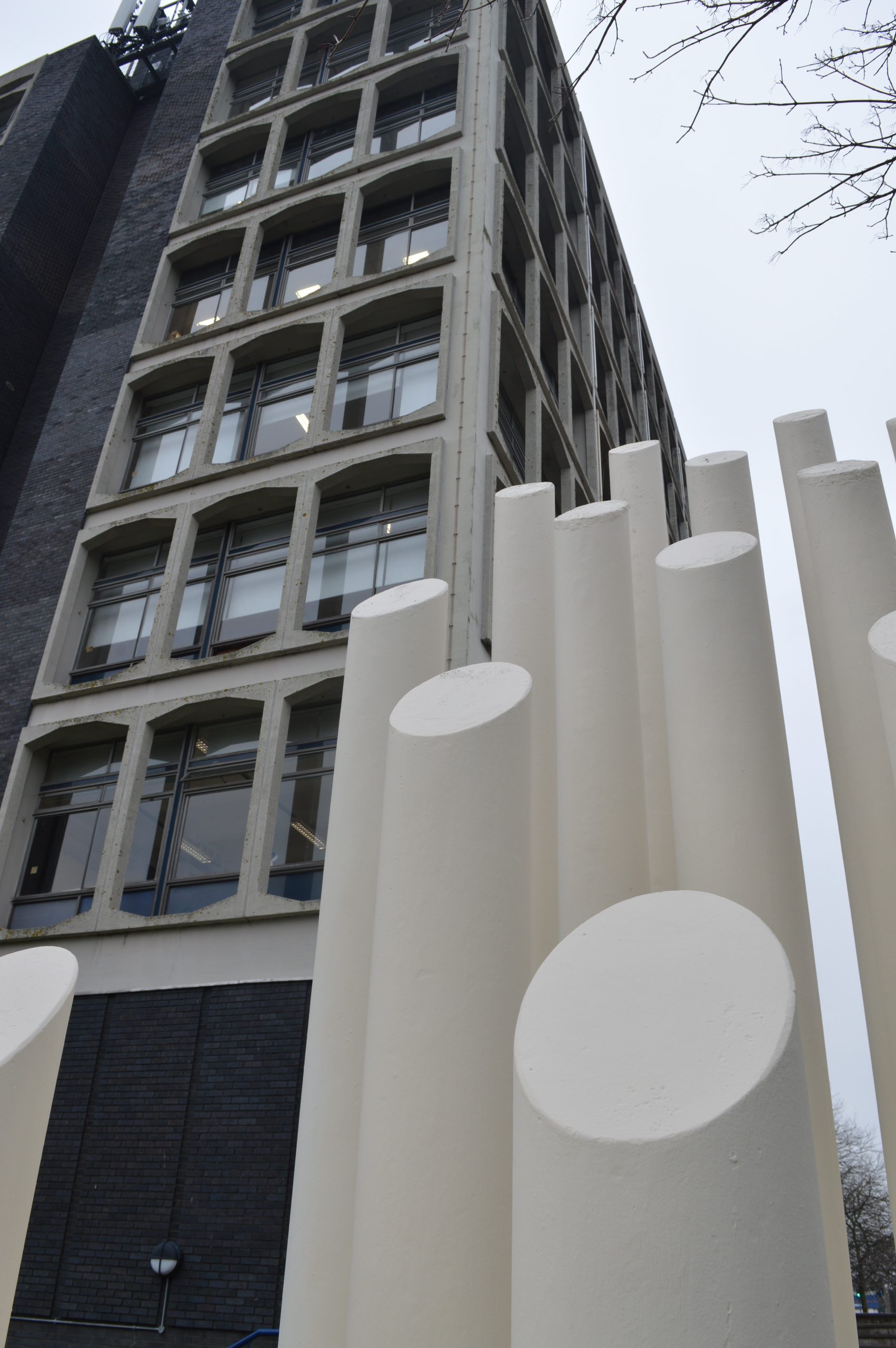
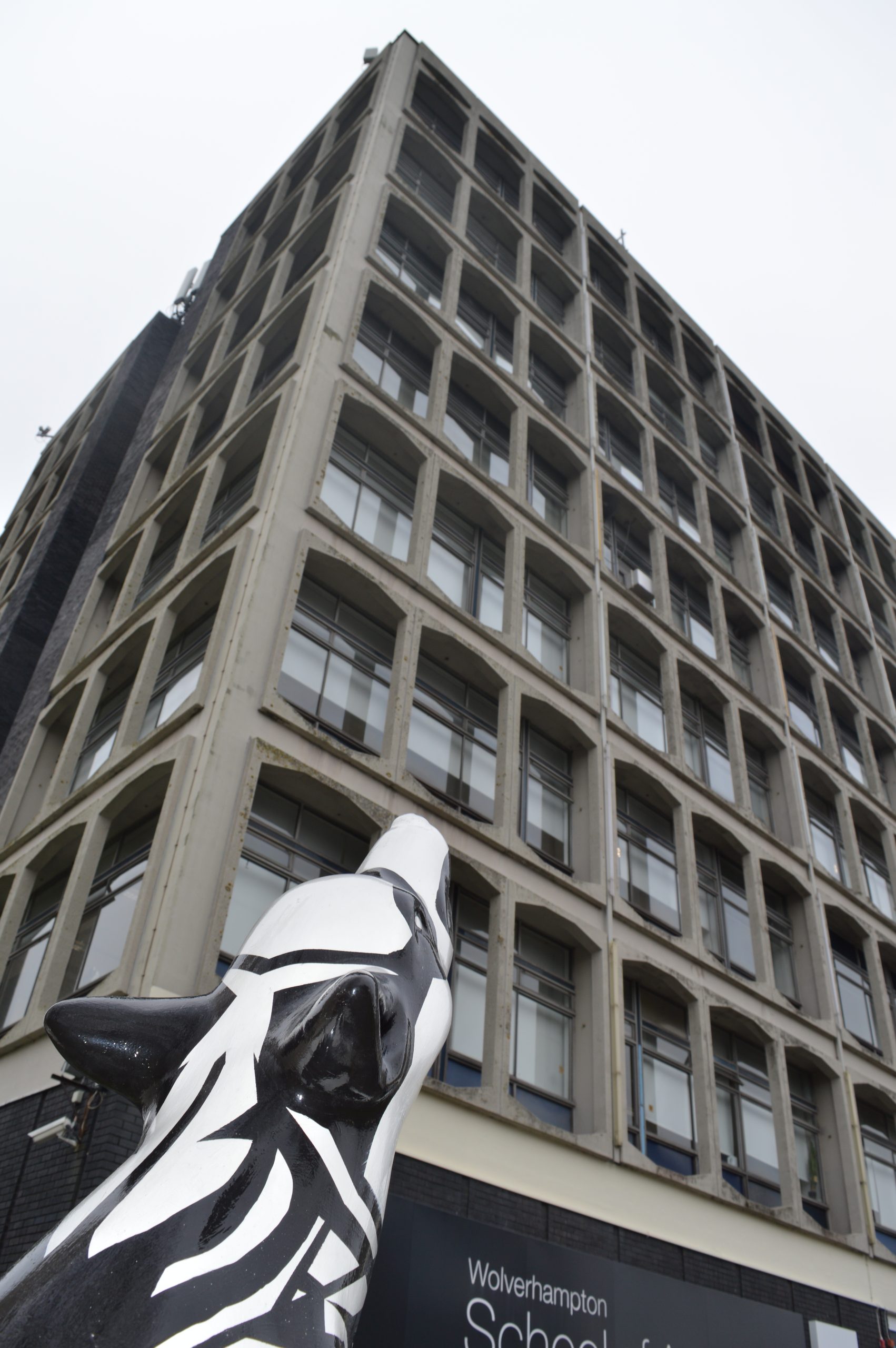
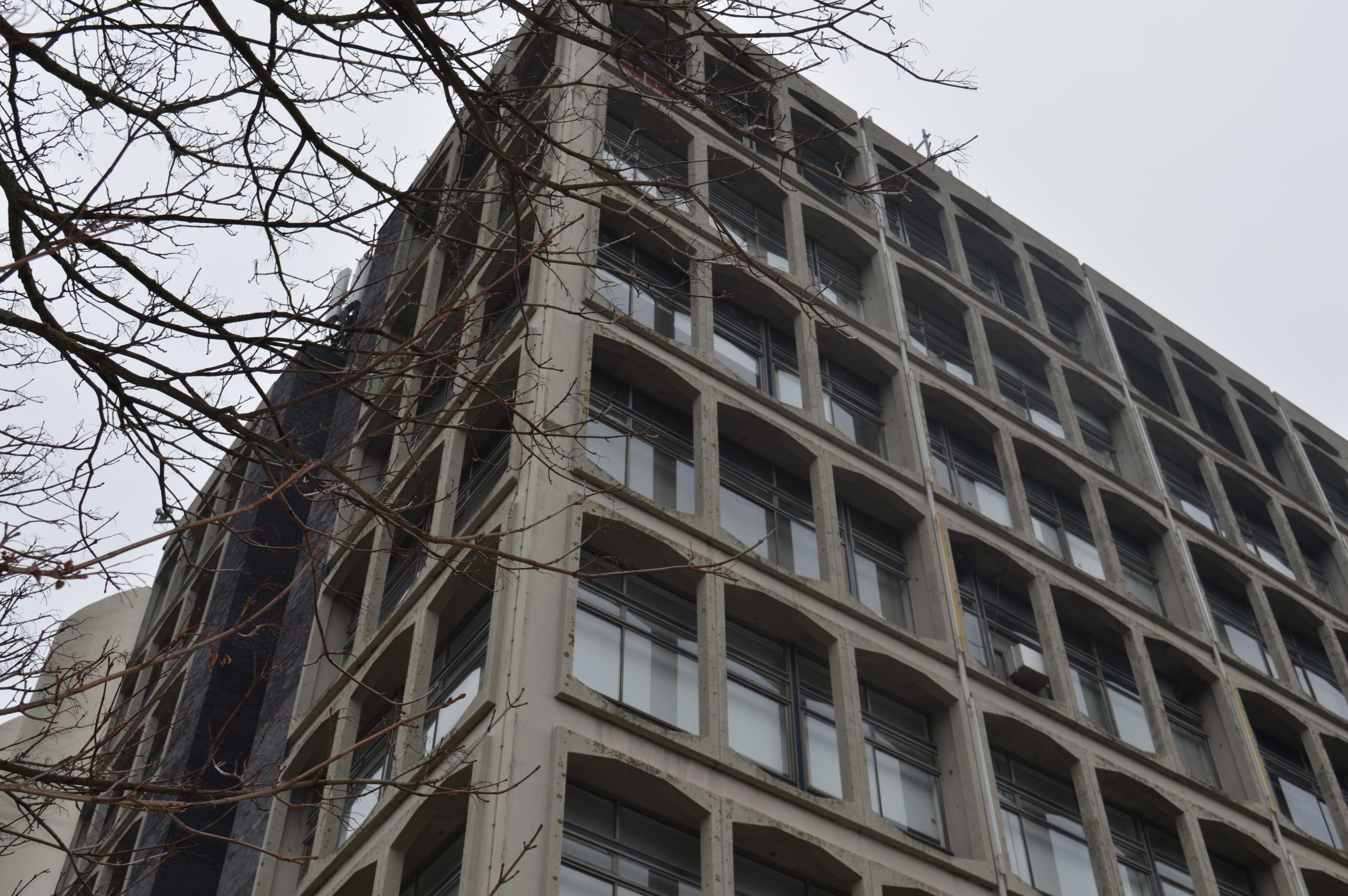
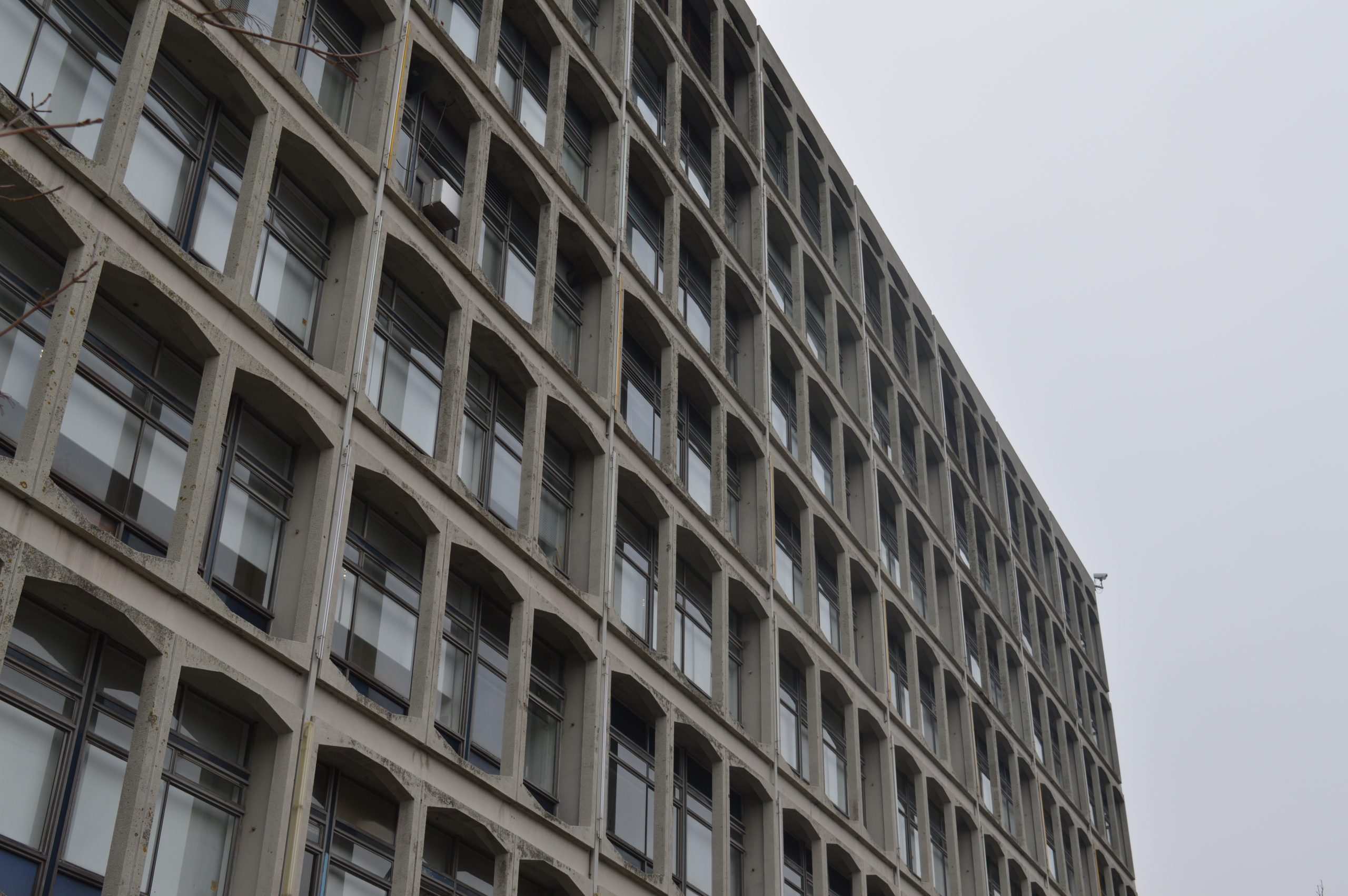
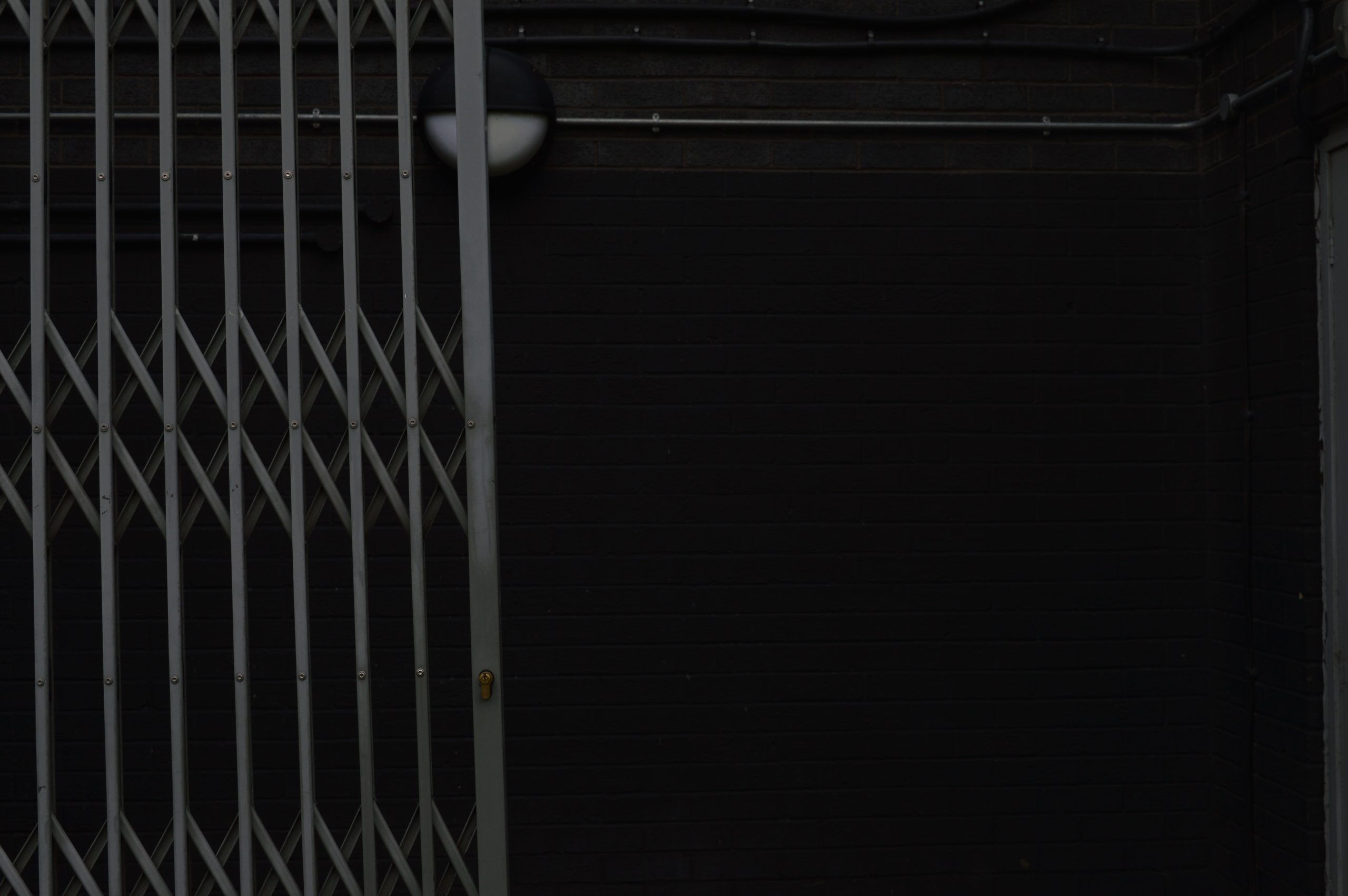
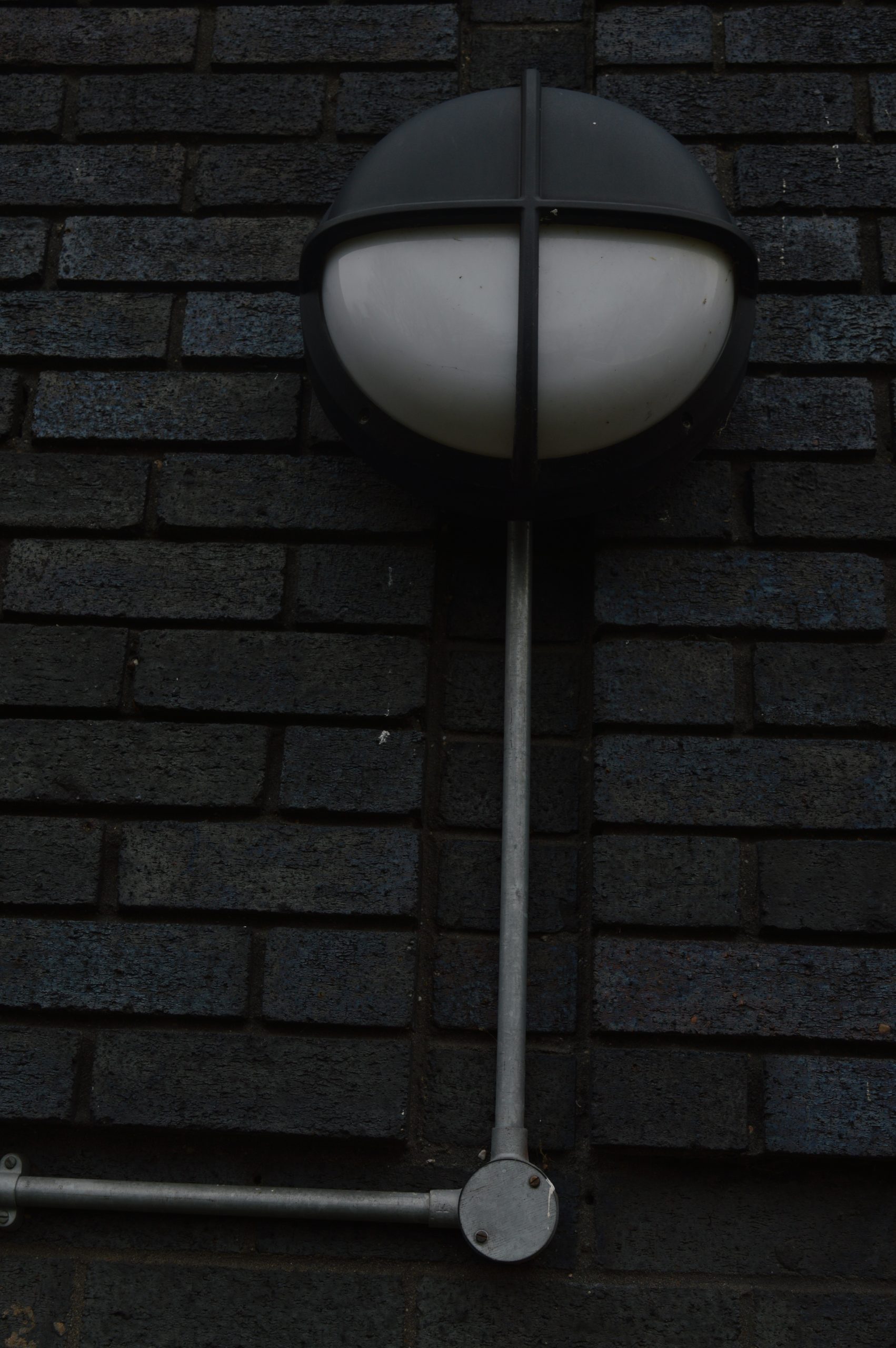
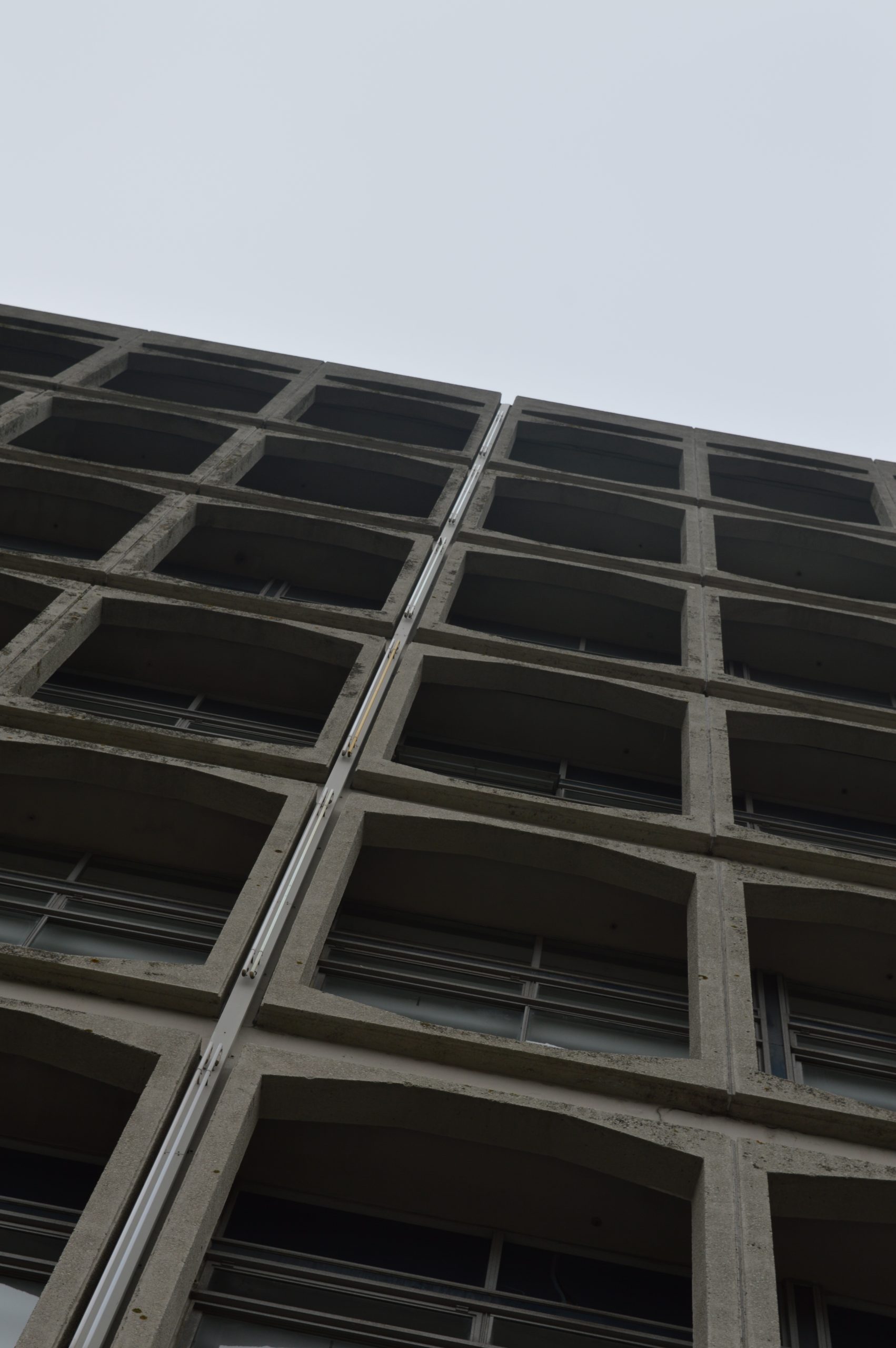
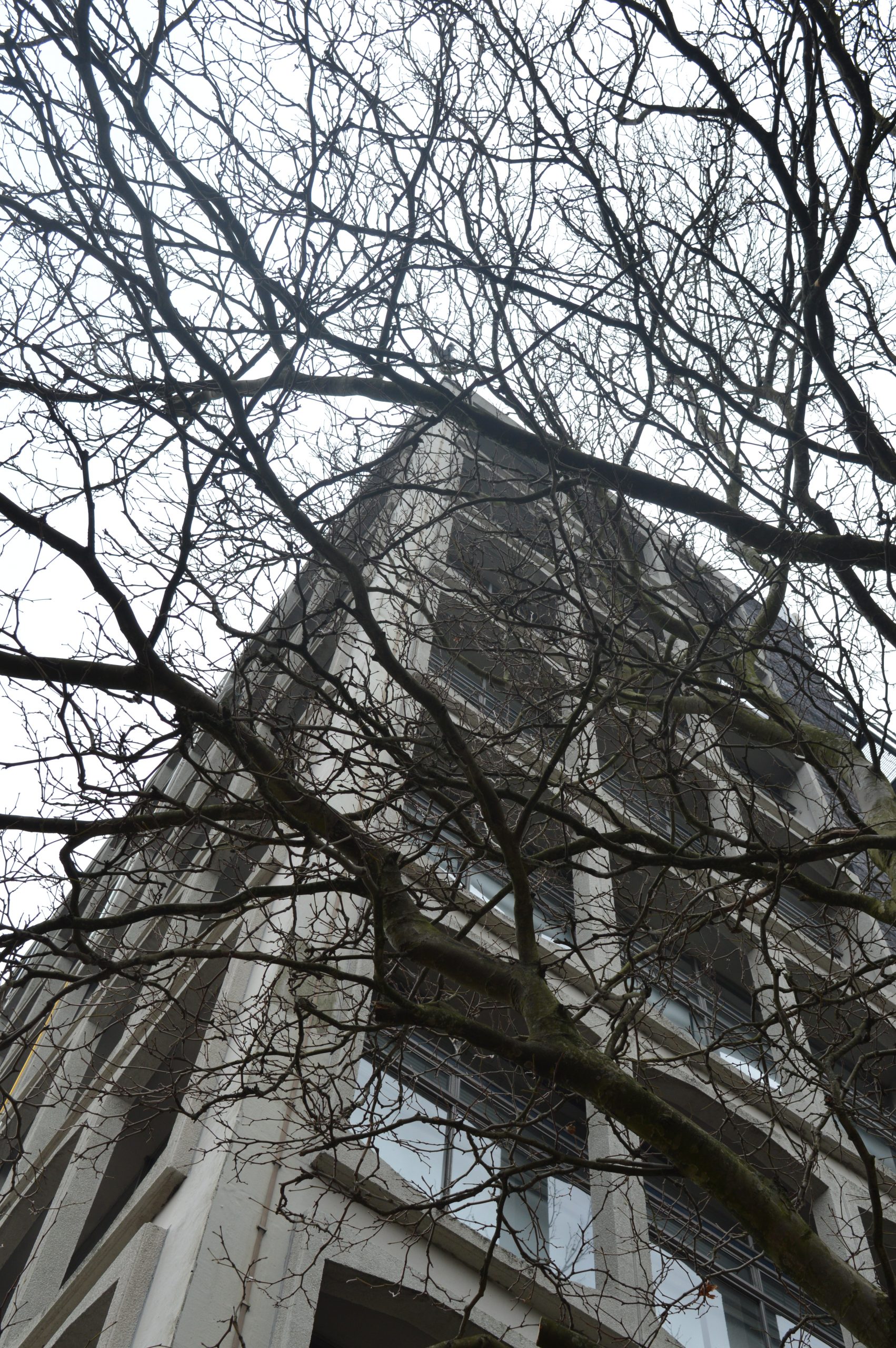
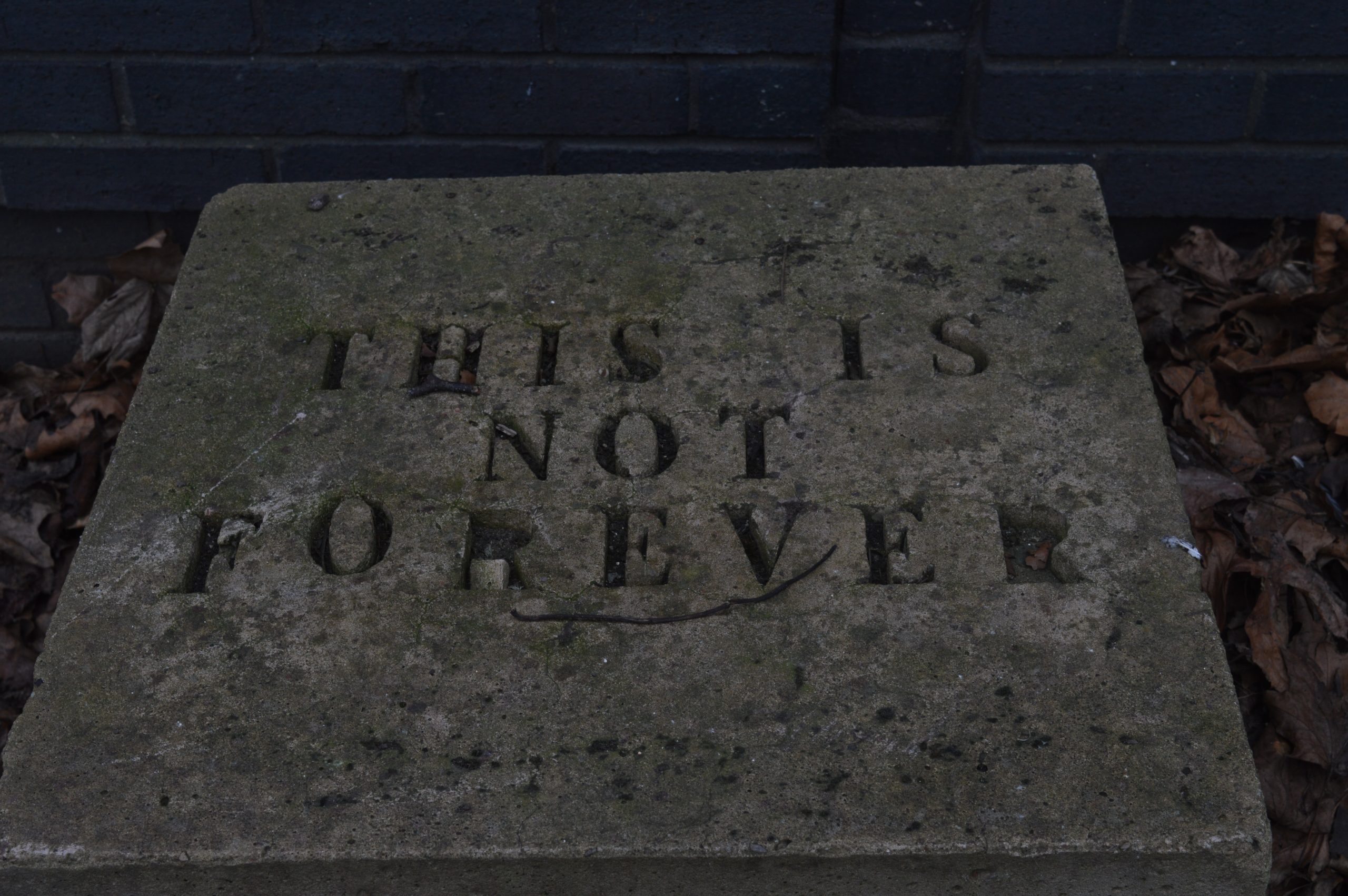
Gavin suggested that there was a cool building in Bulgaria that was famous and it can be found here: https://en.wikipedia.org/wiki/Buzludzha_monument
Google Image Search
I searched for “Dystopian Future” and “2100 Future”images and there were a large number. Using the Tools part of Google Images, I searched for “Large” images as these give you the better quality images in general, not dodgy, pixelated, tiny thumbnails.
I saved a couple of images from google image search as I liked the general feel of the environment in them and began to play with a couple of the images we’d taken earlier.
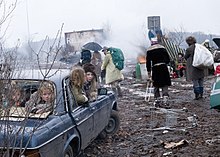


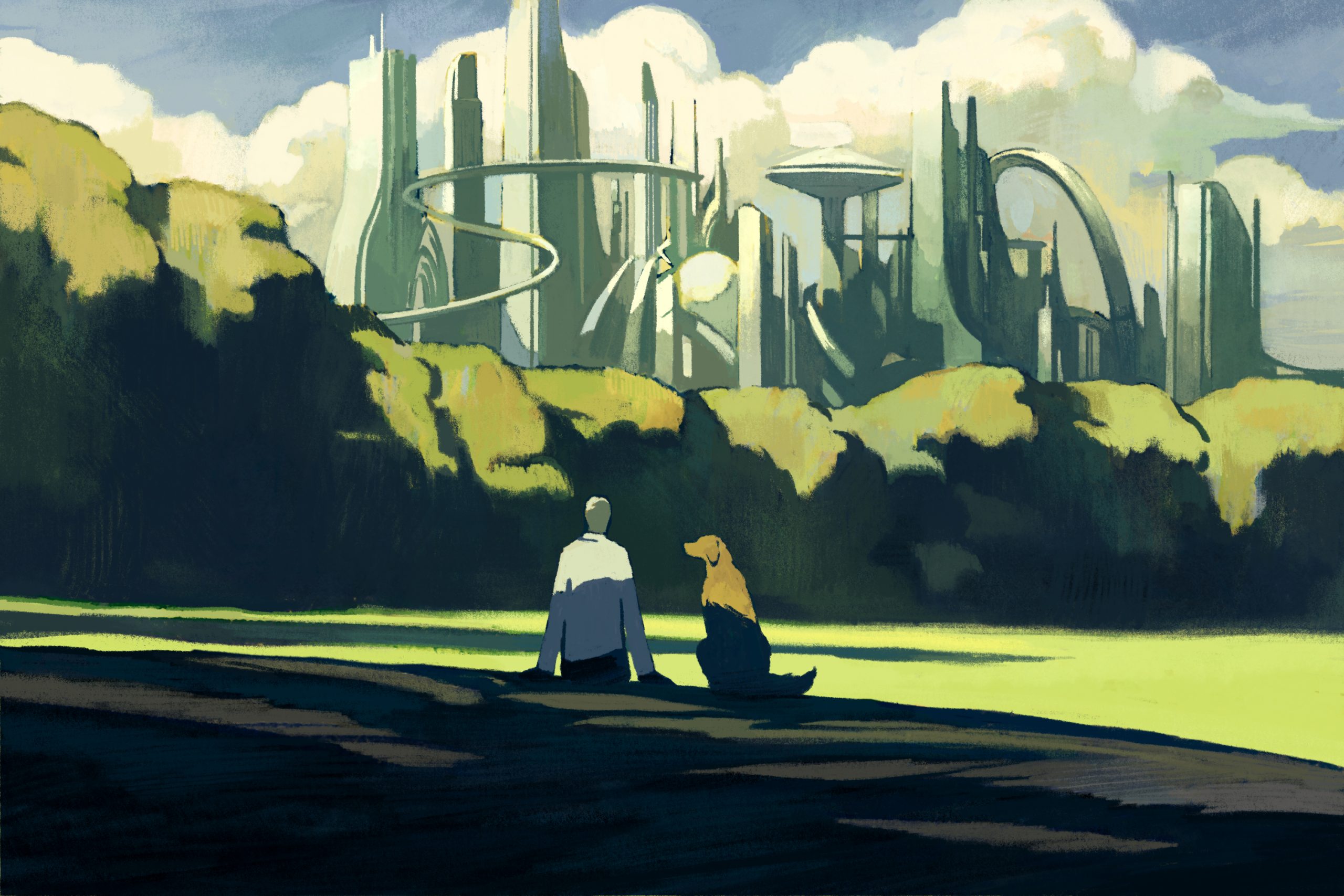
Utopia Poster
I downloaded the utopia future posterised picture with a guy and a dog and then created a layer of the bushes on the left side of the image in photoshop. I used this layer to slide the image of the George Wallis building underneath so that it was between the hedges and the background.
I then used an adjustment layer, something I’m not very experienced with to alter the curves on the building to alter the colours RGB separately to better fit with the existing colours.
I also altered the brightness and exposure to help blend it in further with the overall aesthetic of the main image.
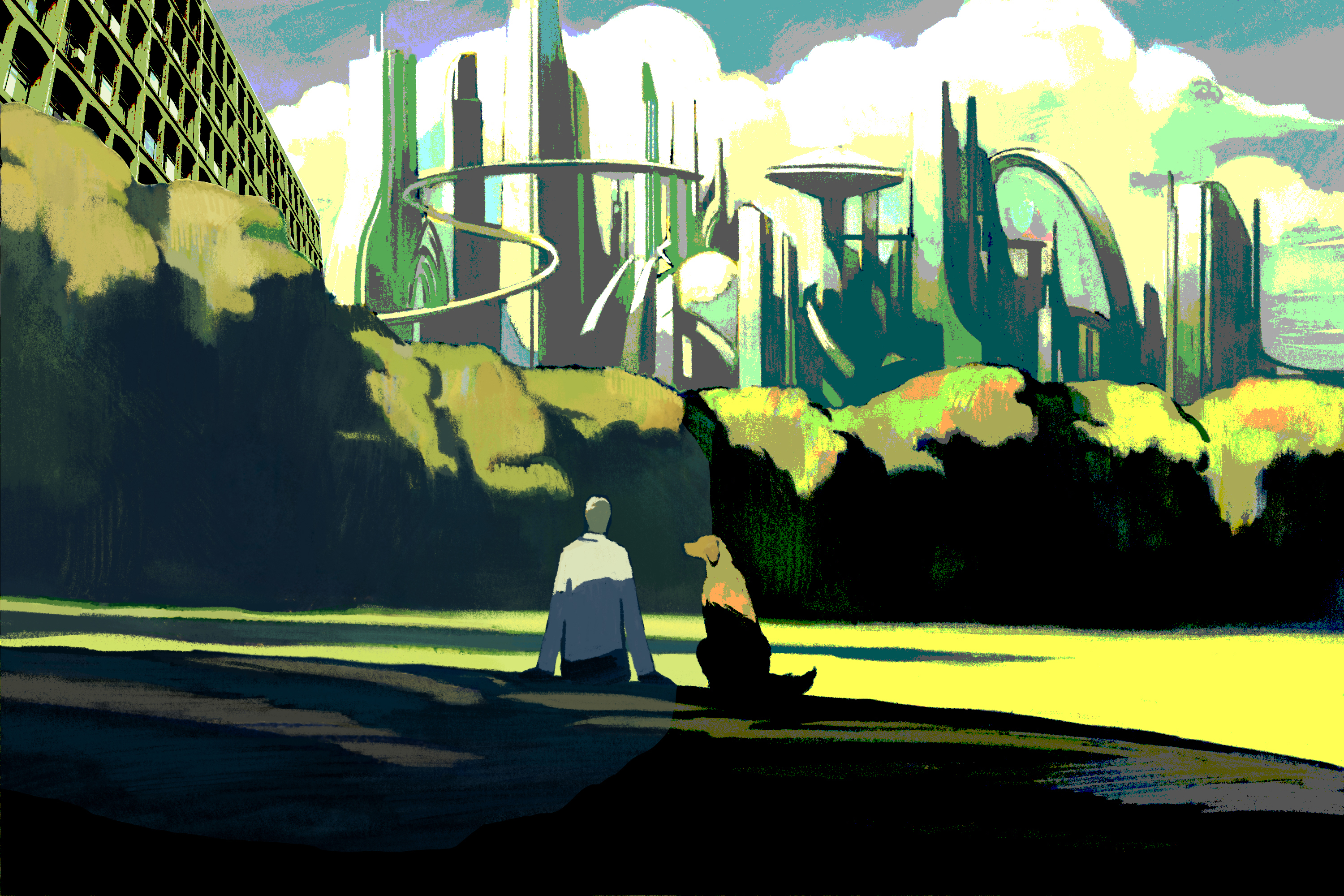
Dystopian City Scape
For the second picture with the black and white dystopian view I changed the base image to monochrome greyscale and flipped it horizontally, then grayscaled the art building photo, then tried to alter contrast and brightness as well as exposure to try and better blend it in.

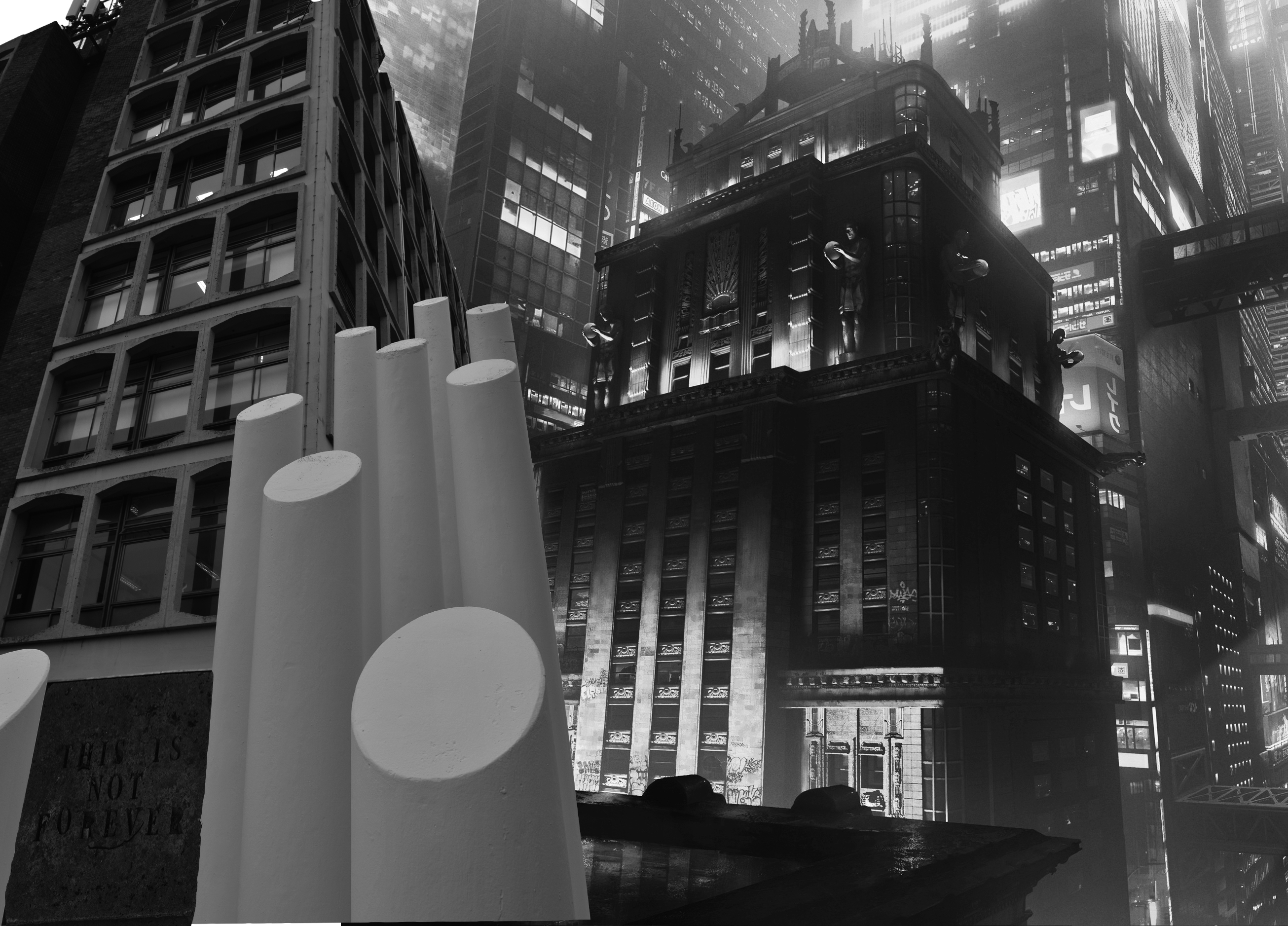
This is incredibly tricky due to the photo being close up and not a wide image of the MK building. While were taking photos around the George Wallis building I noticed a concrete block that was from a 2013 Degree Show with an inscription of “This Is Not Forever” and incorporated that into the base of the building to cover up a bare wall. I had to use the transform tool and alter it out of it’s constraints so that it fit in the space.
The angle of the image doesn’t quite fit in with the perspective and it was bugging me.

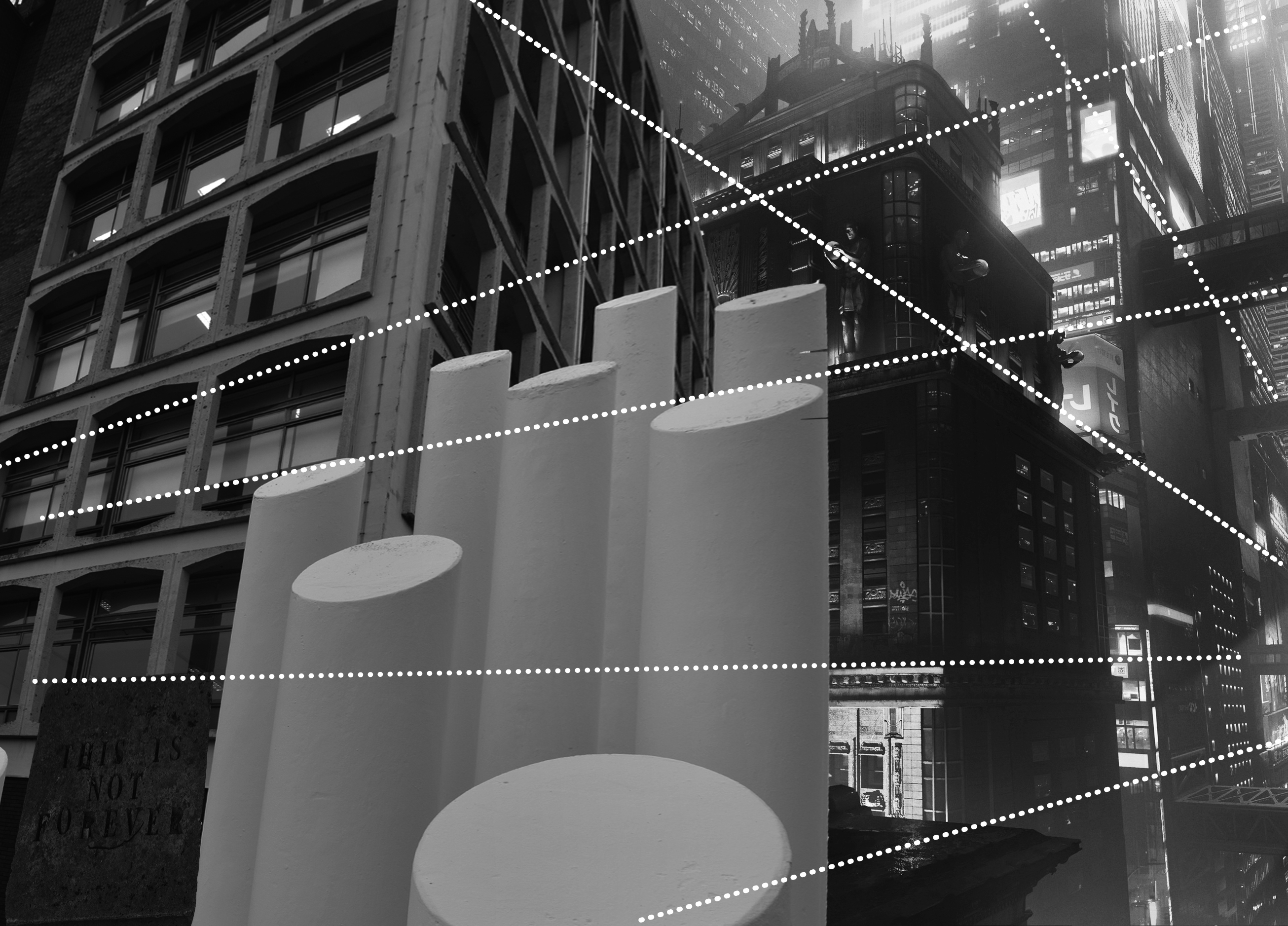
I then added some dotted perspective lines to see if it would help me get to grips with the perspective and warped the transform to help it fit in better. Unfortunately, due to the angle of the original photo of the building I struggled to get the perspective of both sides to align with the background image.

Green Street
I then downloaded an image from https://theconversation.com/future-cities-new-challenges-mean-we-need-to-reimagine-the-look-of-urban-landscapes-151709 and found, in my lightroom library, a picture of the School Of Art building that I’d taken earlier in January to try a better image composite.
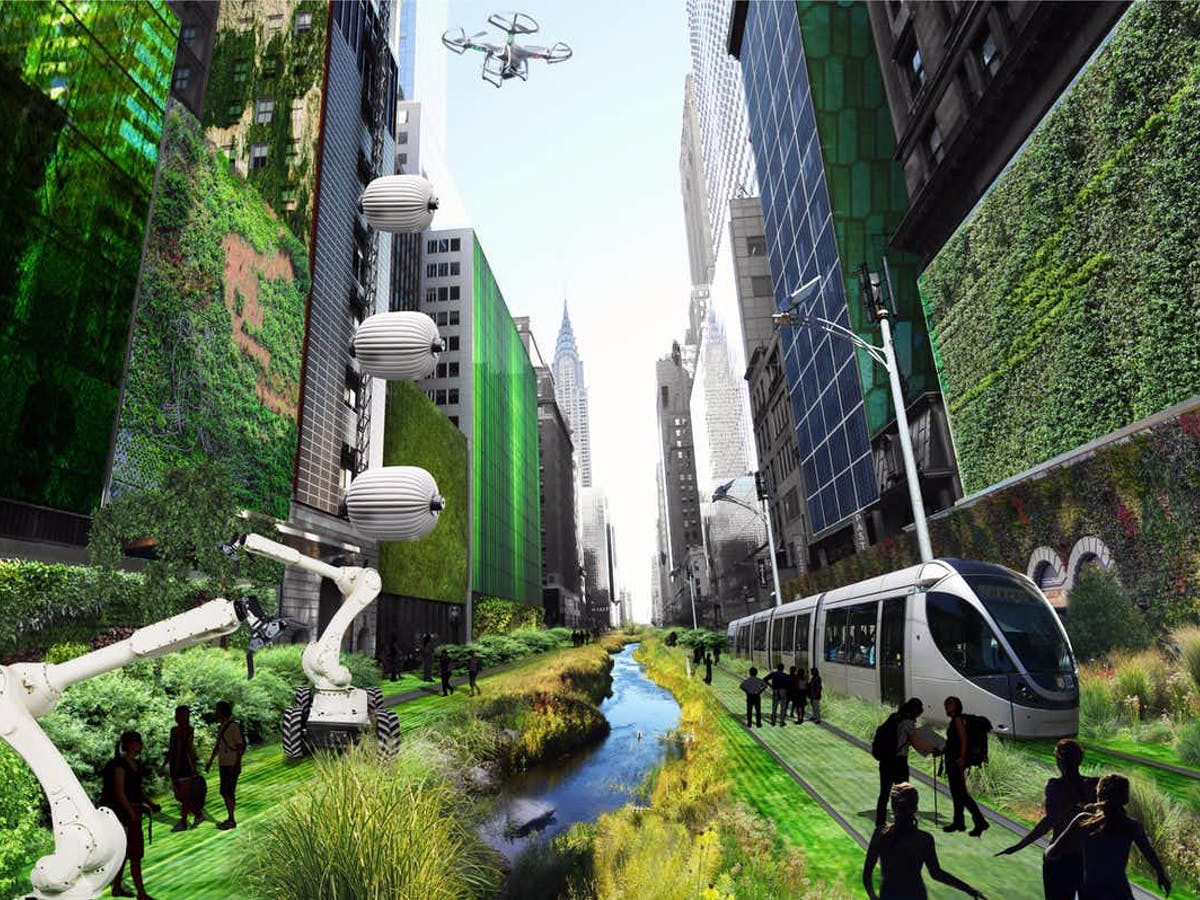
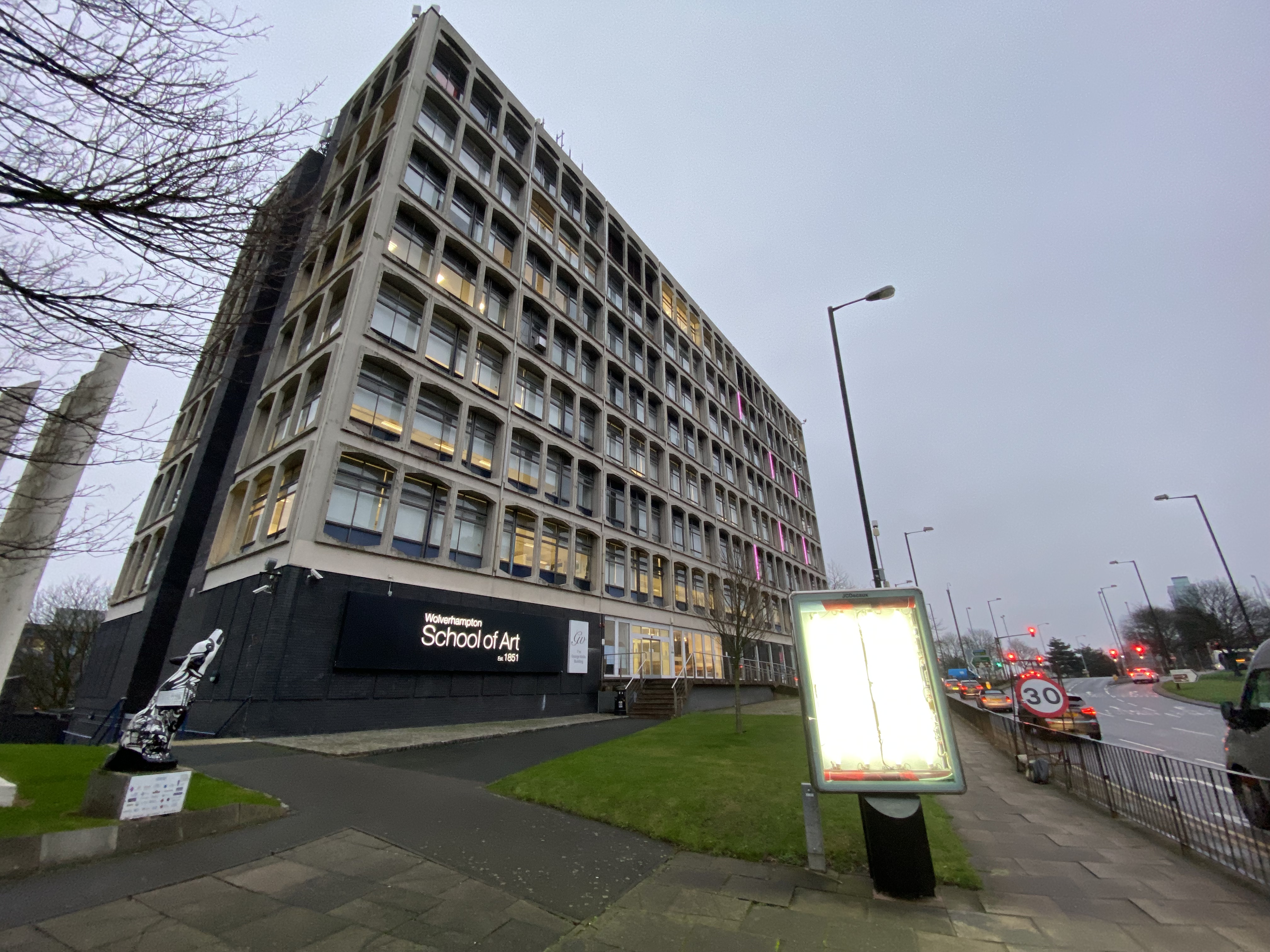
I masked out the left side of the image masking around the strange white filter looking articles and then left the green space and people walking through the idealistic vision.
Once I’d got my initial and much wider angle photo of the building I was able to select the building and extract it from the background before pasting it in as a new layer on the futuristic version.
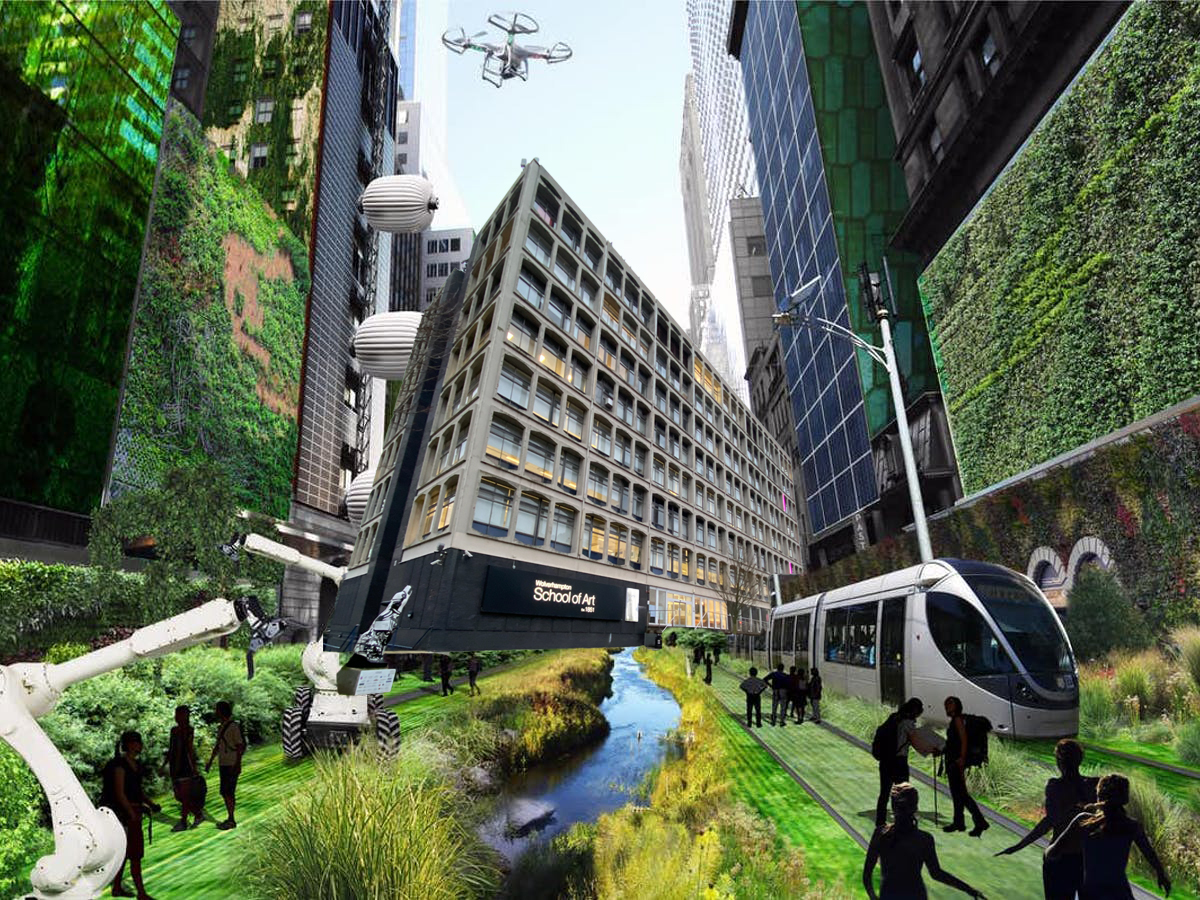
I moved the new layer between the foreground layers and the background and then battled with the Warp Transform to get an improved sense of perspective.
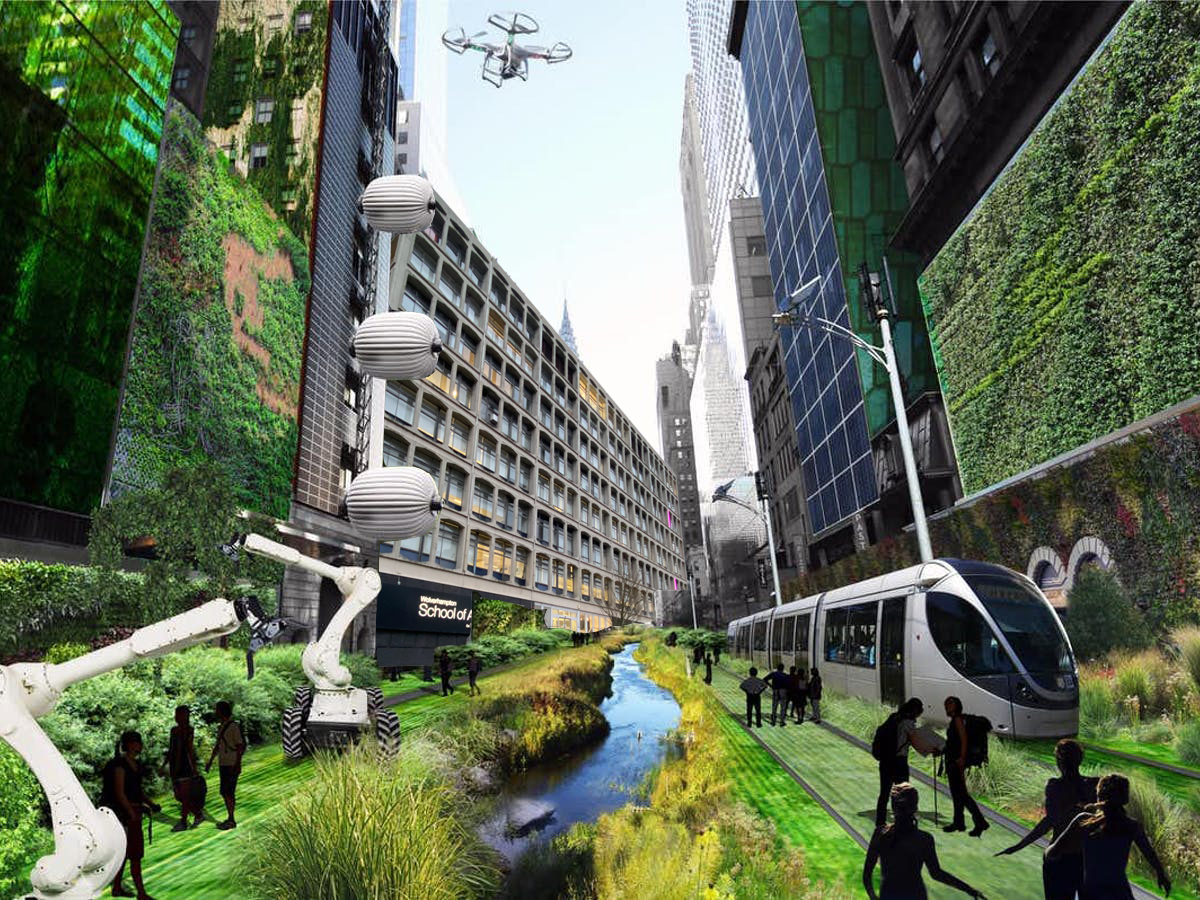
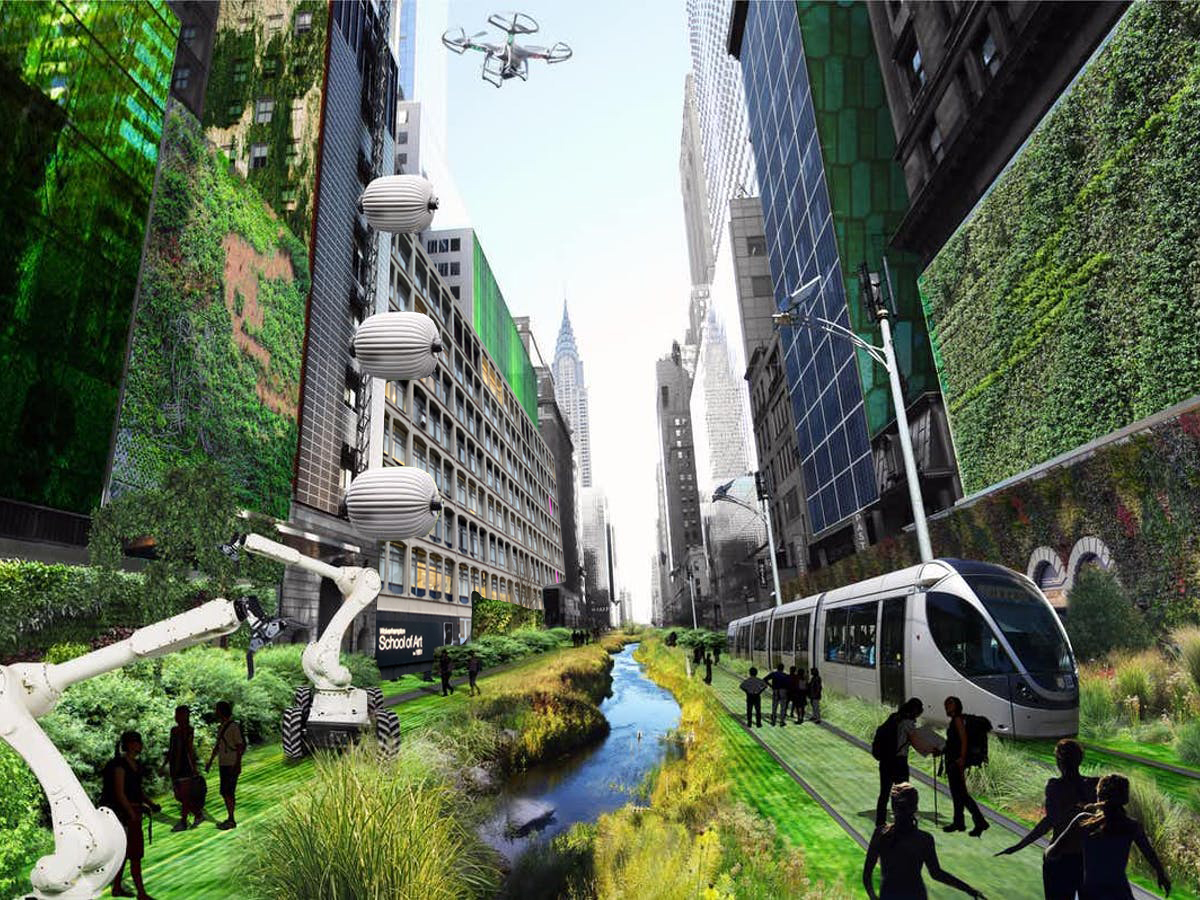
The image behind the MK bldg. layer had some green on it so I used the eraser tool on the layer containing the MK building so that it would show some of the green through and maybe help it fit in in a less obvious way with the surrounding image. The last step was to take the top off the Chrysler Building to try an anonymise the location of this fictional image.

I must also point out that the huge mobile robots would be terrifying if I saw that coming down the street towards me. I quite enjoy the prospects of green walkways and rewilding in the city but I’d imagine that this is highly dependent on significant improvements in the public transport network, especially to remove polluting transport. I imagine from this image that the tram is powered by hydrogen or even nuclear fusion in a compact reactor.
Think About The Future
Greening up buildings is already a thing today with many having rooftop and Vertical gardens, such as https://en.wikipedia.org/wiki/One_Central_Park. Using greenery like this will ultimately improve the atmosphere as long as they’re managed correctly, but it would be unlikely to counter the environmental cost of the materials and processes used to create the building initially.
Looking at the different futures imagined by futurologists today it’s difficult to put a finger on any definite trend or absolute certainty but in my opinion it will likely be inconceivable from todays normality.
Look to the Past
If we look back to 1900 there were very few motor vehicles about on the limited number of roads and Radio Broadcasting was not widely used or known about. If we look to Marconi’s experiments in Radio from around the turn of the 20th century we can see that little over 100 years later we all have the ability and in some cases it’s a necessity for modern life, to carry around a mobile device which allows us to communicate with anyone or everyone simultaneously. The internet is still transferred over radio waves for Wireless networks but much more efficiently and with a greater result than a spoken voice or music. Would these early scientists have predicted the future a century from their time, I doubt it.
Certainty of the state of the future is not possible, with the climate changes the planet and we are undergoing and advances towards quantum computing, fusion power reactors, discoveries about fundamental particles, materials technology, and space exploration which could lead to colonising of other planets by the year 2100.
Space technology interests me greatly, it was 53 years ago this year that Apollo 11 astronauts landed on the surface of the moon, and even with the advances in technology the human race is still very vulnerable to the harsh environment of space and zero gravity, so I doubt that in eighty years’ time we’ll be able to travel significantly longer distances to other planets without serious adverse effects on travellers health, both physical and mental.
Over Population
Population will be the biggest challenge to face the planet and an ever expanding number of people depending on the limited resources of our home planet will see either triumph or tragedy. The triumph being learning to manage our environment to help provide enough food and resources for everyone without harming the underlying structure, maybe we find better methods to dispose of waste that can be used to fertilise and keep nutrients in the ground. The alternative is that we continue to over farm areas where we rely on the current environment for carbon-sinking and push it too far so it becomes unusable, or the climate effects cause growth problems. Following this would be severe famines and the lawlessness that this would create, with hungry people fighting for food and people with just enough to survive being protective of their own sources.
It may be that a repeat of the Covid Pandemic with something even deadlier is imminent and reduces the number of people on the planet or maybe even a real life Thanos does “the snap” to remove 4 Billion humans from the Earth. There are many films and books written about sociopathic narcissists like Thanos, think of Kingsman’s “Valentine” or Bond FIlm, No Time To Die’s “Safin”, as well as the Ebola Attack in Tom Clancy’s “Executive Orders” novel, who hatch plans to reduce the number of souls on earth. To underestimate people who may have these narcissistic delusions of self grandeur might lead to someone actually thinking this is a good idea.
With the suspicion of Covid 19 being developed in a Chinese Lab (at this time there’s no indisputable proof of this) it could almost be the start of a chilling novel.
Over population of the planet will undoubtedly lead to climate change that will be difficult to slow or reverse, unless things are changed and the governments of the world unite to drive down the greenhouse gases released into the atmosphere. Industry must still continue but at what cost to the planet and our grandchildren?
Blimey, I went a bit political then, apologies for that. I do try and keep an open mind and not propagate views that might end up in an argument or unpleasant discourse. It’s very rare I share views on such political matters and have my own beliefs but generally keep them to myself, and make my own mind up using peer reviewed facts and data provided by scientists and trusted organisations around the scientific community.
Next Week
Next monday we’re to take in our digital cameras so we can have a walk around the Wolverhampton city centre for the next part of the module.. I’ll brief you in on that as soon as I get my thoughts down on my OneNote page.. Cheers.
Be First to Comment